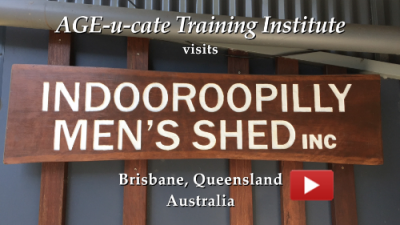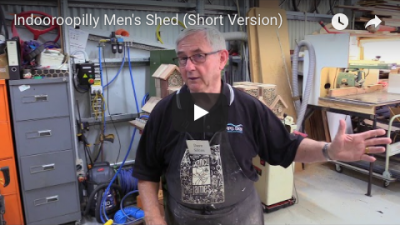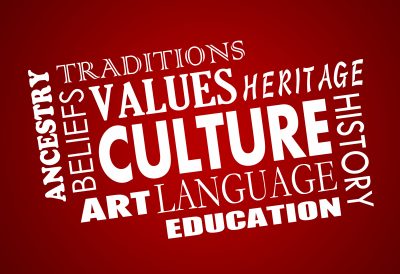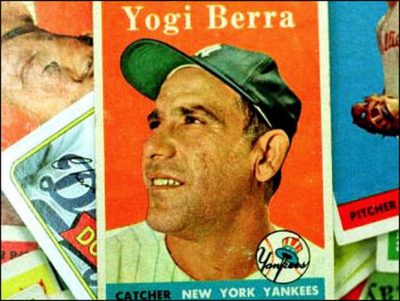
On my recent travels to the beautiful country of Australia, one of the highlights of my trip was my visit to the Indooroopilly Men’s Shed, one of many such sheds throughout the country.
The Australian Men’s Shed Association (AMSA) is the peak body supporting almost 1000 Men’s Sheds and is recognized as one of Australia’s largest male based community development organizations.
Founded in 2007, AMSA is funded by the Federal Department of Health to provide practical support to Men’s Sheds and deliver a wide range of services. It aims to improve the health and wellbeing of members and reduce the number of men who are at risk from preventable health issues that may emanate from isolation.

Through collaboration and strategic partnerships with national, state, territory and health related community services such as beyondblue, Heart Foundation, Department of Veteran Affairs, Cancer Council, AMSA has developed a range of resources and delivered a variety of national initiatives such as “Spanner in the Works?”, a men’s health project.
Tour of the Indooroopilly Men’s Shed with host David SilcoxTheir tagline reads “Shoulder to Shoulder”. Research points to the fact that men communicate with others side-to-side, while women are more inclined to communicate face to face.
Sociologist Harry Brod surmises that the side-by-side shoulder orientation is a way for men to seek intimacy. “Numerous studies have established that men are more likely to define emotional closeness as working or playing side-by-side, while women often view it as talking face-to-face. Men, for example, derive intimacy from playing and watching sports.”
Through the activities and programs offered at the Men’s Shed, it promotes healthy aging, reduces risk of depression, isolation and chronic illness that are often associated with aging adults, especially men.
The objectives of the Indooroopilly Men’s Shed in Queensland include:
- Advance the health and well-being of members.
- Promote men’s health programs.
- Identify and nurture innovative ideas and activities for men.
- Encourage men with widely varying skills.
- Pursue hobbies, pastimes and interests.
- Learn new skills and practice and pass on old skills.
- Learn about their own and other men’s health and well-being.
- By their efforts contribute to their families, their friends, the Sed and the wider community.
- Mentor younger men.
- Promote members’ empathy for fellow men.
- Enhance personal and group self-esteem and pride in accomplishments.
- Foster members’ interest in and assistance to the local community.
For more information visit www.mensshed.org
Pam Brandon is President/Founder of AGE-u-cate® Training Institute and a passionate advocate for older adults and those that serve them.
 The increasing diversity of the U.S. and other nations offers opportunities and challenges for senior care care providers, health care systems, and policy makers to create and deliver services to culturally diverse patients and to train and increasingly culturally diverse workforce. Cultural competence refers to an ability to interact effectively with people of different cultures. Cultural competence comprises four components: (a) awareness of one’s own cultural worldview, (b) attitude towards cultural differences, (c) knowledge of different cultural practices and worldviews, and (d) cross-cultural skills. Developing cultural competence through training can result in a better ability to understand, communicate with, and effectively interact with people across cultures and can lead to a 15% decrease in miscommunication. In senior care, this communications training can significantly improve outcomes, especially in caring for those with dementias, chronic illness, pain and at end-of-life.
The increasing diversity of the U.S. and other nations offers opportunities and challenges for senior care care providers, health care systems, and policy makers to create and deliver services to culturally diverse patients and to train and increasingly culturally diverse workforce. Cultural competence refers to an ability to interact effectively with people of different cultures. Cultural competence comprises four components: (a) awareness of one’s own cultural worldview, (b) attitude towards cultural differences, (c) knowledge of different cultural practices and worldviews, and (d) cross-cultural skills. Developing cultural competence through training can result in a better ability to understand, communicate with, and effectively interact with people across cultures and can lead to a 15% decrease in miscommunication. In senior care, this communications training can significantly improve outcomes, especially in caring for those with dementias, chronic illness, pain and at end-of-life. Lawrence Peter “Yogi” Berra was an American professional baseball catcher, manager, and coach who played 19 seasons in Major League Baseball. One of his famous quotes “The Future Ain’t What it Used to Be” couldn’t be more appropriate as we look at the paradigm shifts taking place in our aging world.
Lawrence Peter “Yogi” Berra was an American professional baseball catcher, manager, and coach who played 19 seasons in Major League Baseball. One of his famous quotes “The Future Ain’t What it Used to Be” couldn’t be more appropriate as we look at the paradigm shifts taking place in our aging world. The rapid pace of our aging world is changing the face of every facet of our society from health and long term care, to faith communities and business establishments. Across the spectrum, issues such as these are at the forefront of leadership discussions:
The rapid pace of our aging world is changing the face of every facet of our society from health and long term care, to faith communities and business establishments. Across the spectrum, issues such as these are at the forefront of leadership discussions: